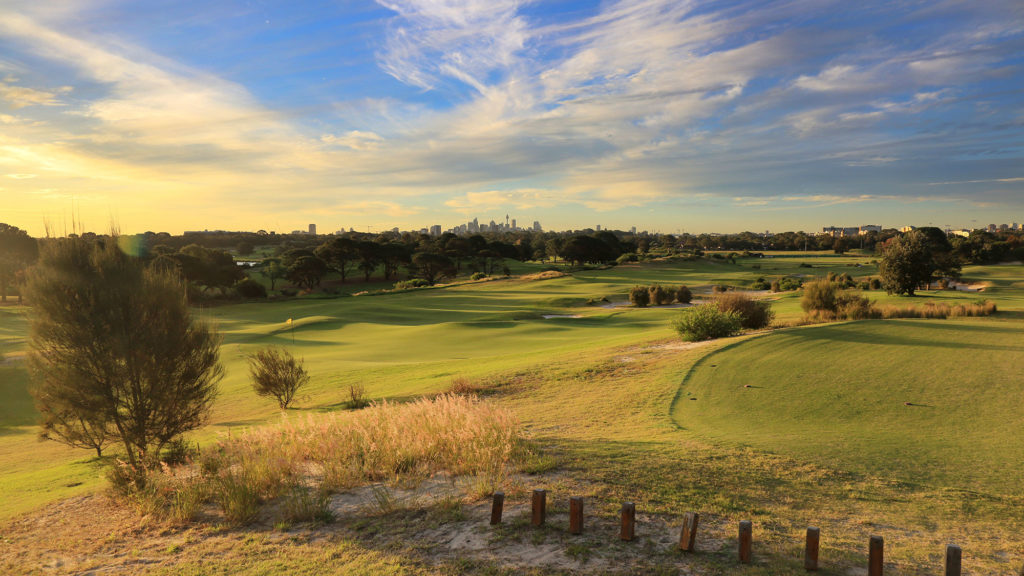However, some things remain delightfully the same as we unveil our 18th biennial ranking of Australia’s Top 100 Courses.
We got a little lucky last time. The 2020 edition of our Top 100 Courses ranking was published only a few weeks before Australia and most of the world halted everyday life as a result of COVID-19. That ranking suddenly felt less important, yet it was 100 percent untouched by the pandemic. This time we weren’t so fortunate.

While we absolutely consider the 2022 ranking to be the result of a complete and thorough process once again, it was a process with a difference. Ongoing travel and border restrictions limited our panel’s ability to see courses outside their own state and, in many instances, even within their own neighbourhood. Like most golfers, our panellists had to jostle for tee-times and many clubs were not accepting non-member play for much of this ranking period. Yet – collectively – they did it. We thanked our lucky stars on numerous occasions that we had expanded to a vastly bigger judging panel two rankings ago, as a small one simply couldn’t have done as complete and accurate a job.
Change was unavoidable, however. Firstly, we removed our parameters on how many courses each panel member needed to see and score. Instead, we asked them to do the best they could – a leniency welcomed by our Victorian judges in particular. Secondly, we gave them an extra two-and-a-half months to assess courses. In a move away from our regular March timing, we delayed the ranking until the May issue for two reasons: 1) to give our panel a little extra time to see courses, and 2) by publishing in March, our panel historically needed to finalise their scores by December 31, which robbed them of most of the last summer – a time when most golfers play more golf and when courses in many parts of Australia look their best. Waiting for the May issue gave them until the first half of March before we cut off the lodgment of scores (more on that in a moment). So for the first time since 1991, when the ranking came out in October, we deliver it to you in a month other than March. We expect the May timing to be a permanent move, largely for the second reason outlined above.

Understandably, our panel of 140 judges lodged far fewer total scores this time but collectively they saw more than 50 additional courses (321 versus 263 in 2020) – no mean feat in the COVID era. So make no mistake, this is still a comprehensive national snapshot. They also lodged their tips via a revamped online portal. At considerable effort and expense, Australian Golf Digest commissioned the Newcastle-based Out Of The Square agency to overhaul our Top 100 Courses portal and give our panel (and us) a far more complete ‘home’ for golf-course ranking scores. Gathering data in such an efficient way had the happy side effect of allowing all panellists an extra couple of weeks to see courses and submit scores, as the website essentially did all the vital number-crunching for us.
There was more change. For 35 years, a golf course needed to fulfil two criteria to be eligible for our ranking: the course needed to have 18 holes and be in Australia. In a historic first, one of those criteria was dispensed with.
Nine-hole courses – or, more specifically, courses with fewer than 18 holes – had previously been outcast by our ranking’s 18-holes-only mantra. Just as we are seeing in golf more broadly, that was a tired attitude. So from this latest ranking cycle forward, we welcome any golf course in Australia, regardless of how many holes it has. It made a difference for only one course this time around, but a few other ‘shorties’ lurked surprisingly close to the pointy end of the ranking.

We also revised the definitions of five of our seven scoring criteria [see page 58], part of which included adding a place to account for ‘fun’. The architectural merits of a golf course will always be king, but the fun factor is one that should never be discounted in the game.
Amid all the change, this was actually not a volatile ranking period. Although 14 courses dropped off the 2020 list and 14 more were voted back in, no course that stayed in the Top 100 from last time moved by more than eight places. Past entrants returned, newcomers emerged and an old favourite built on its lead at the top. So while this may have been a ranking period of great flux in many ways, in other ways it is reassuring to know some things didn’t budge an inch.

